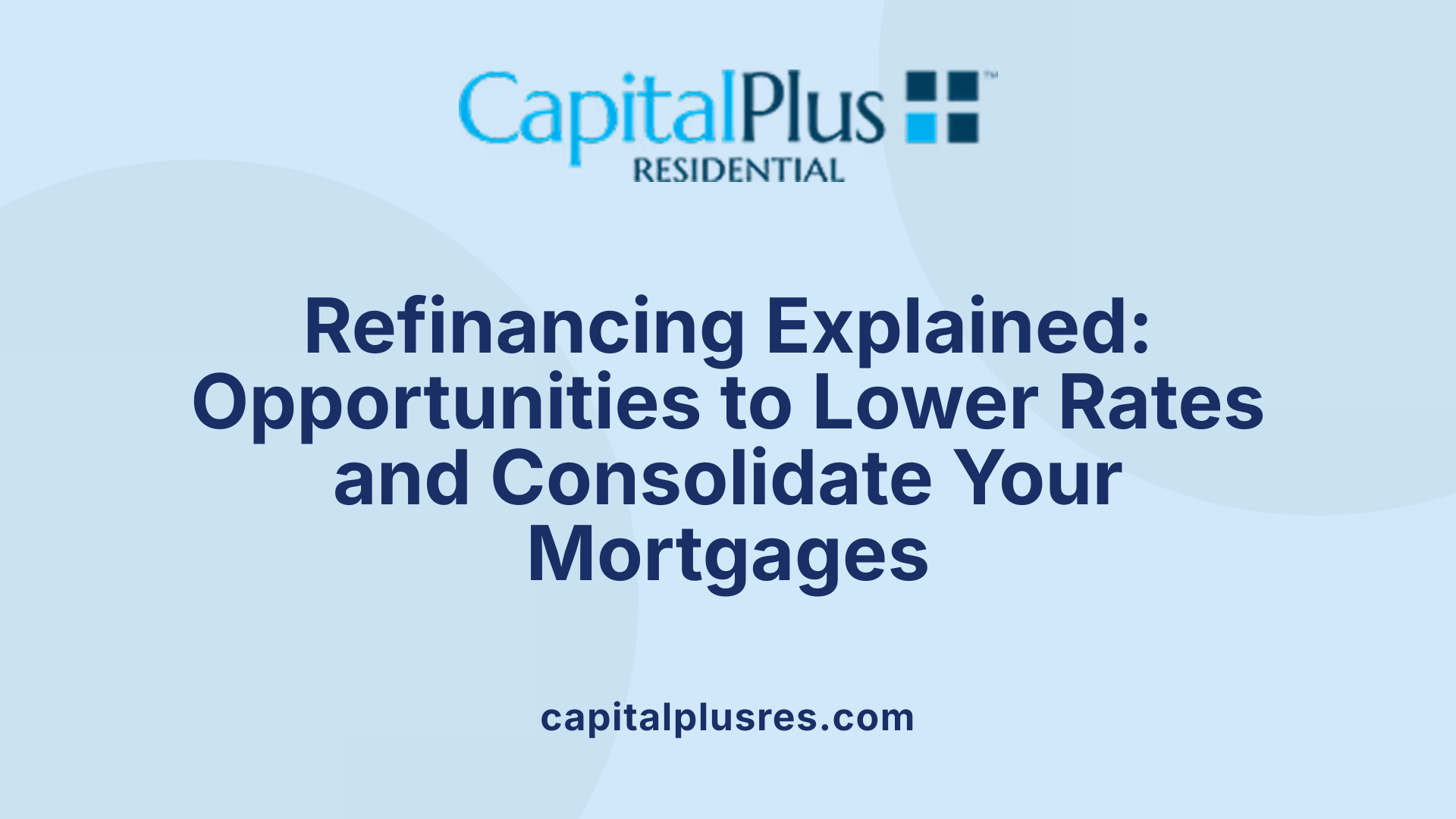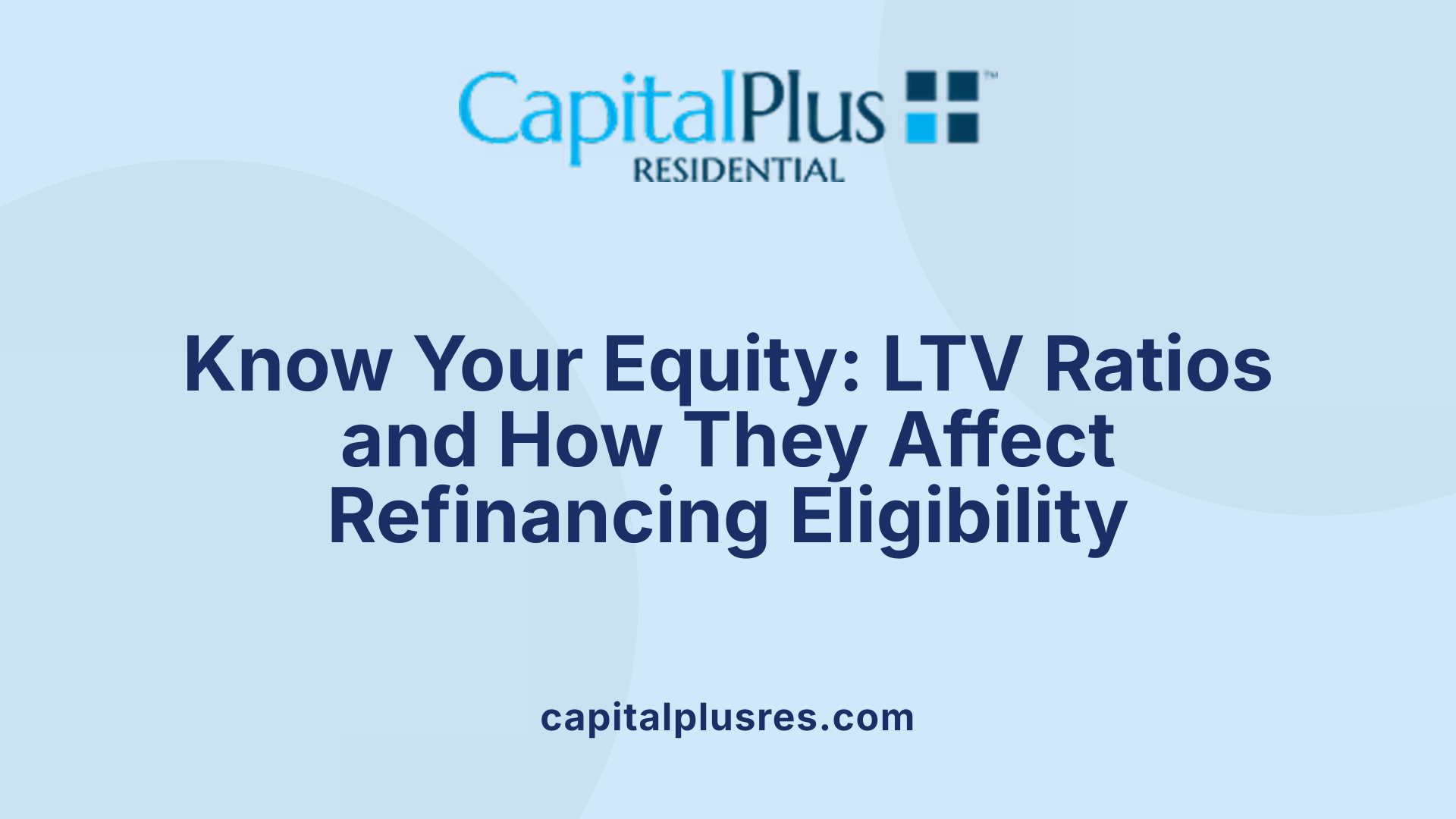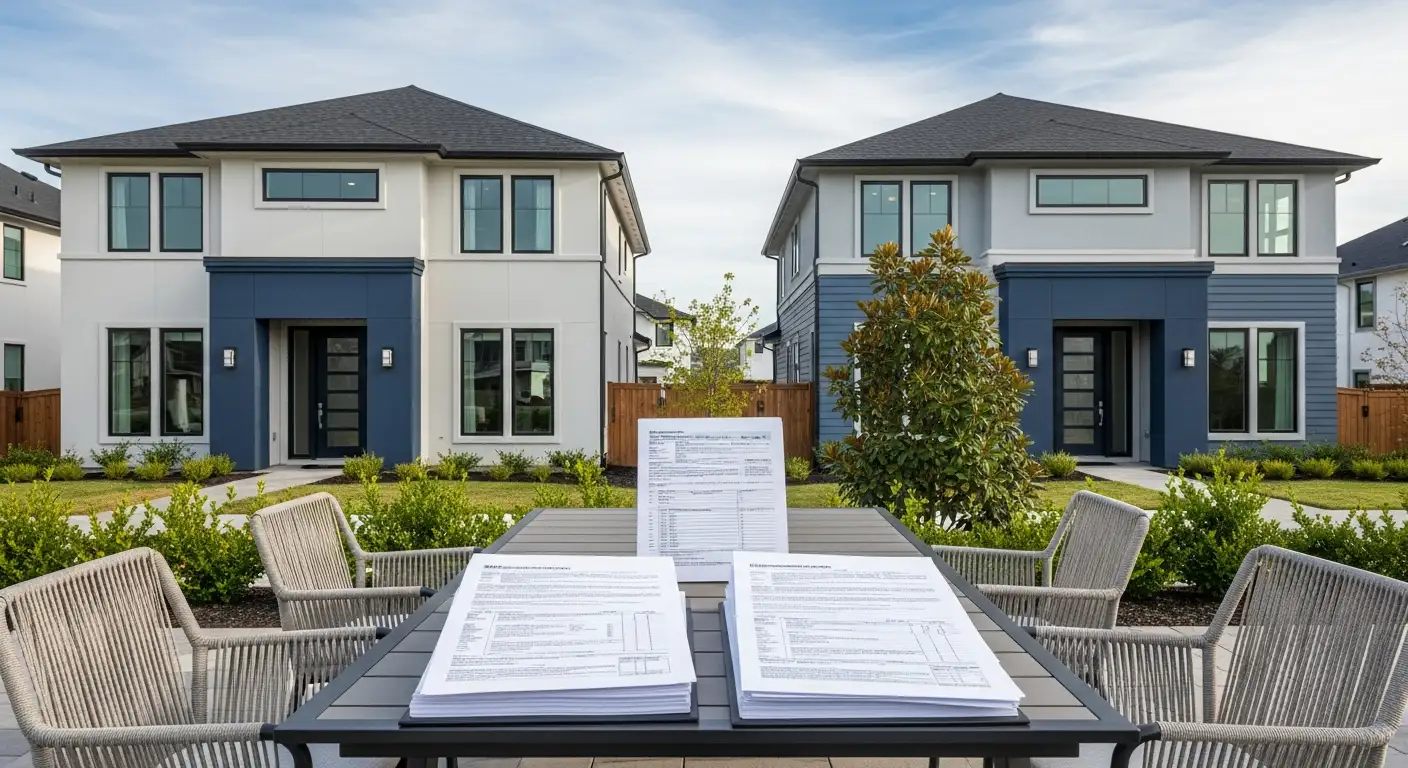Understanding the Basics of Mortgage Refinancing and Second Mortgages
Homeowners often juggle multiple mortgages, including a primary mortgage and a second mortgage such as a home equity loan or a home equity line of credit (HELOC). Refinancing to combine these first and second mortgages into a single loan can offer significant financial advantages, such as lower interest rates, streamlined payments, and more manageable loan terms. This article explores the intricacies of this process, helping homeowners make informed decisions about their residential lending options.
What is Refinancing and How Does It Apply to First and Second Mortgages?

What is Refinancing?
Refinancing involves replacing your existing primary mortgage with a new loan. This new mortgage can offer different terms, such as a lower interest rate or altered loan duration, making it possible to improve your financial situation.
Replacing the Primary Mortgage
When you refinance, the original mortgage is paid off and replaced by the new loan. This can allow you to consolidate debt, reduce monthly payments, or change from a variable-rate to a fixed-rate mortgage to eliminate payment uncertainty.
Combining Mortgages into One Loan
If you have both a primary mortgage and a second mortgage, refinancing may enable you to combine these into a single loan. This can simplify payments and potentially secure a lower overall interest rate. However, most lenders require at least 20% home equity to approve such a consolidation.
Cash-Out Refinancing Explained
Cash-out refinancing is a specific type of refinancing where you borrow more than what you owe on the mortgage and receive the difference in cash. This option taps into your home equity, providing funds for home improvements, debt consolidation, or other expenses, but also increases your loan balance.
Refinancing offers homeowners flexibility to adjust loan structures and access funds, but it comes with closing costs and qualification requirements such as income verification and credit checks. Understanding these essentials can help you decide if refinancing your first or second mortgage suits your financial needs.
Understanding Second Mortgages: Home Equity Loans and HELOCs

What Is a Second Mortgage?
A second mortgage is a loan taken against the equity you have built in your home. It is secured by a lien on your property, just like your primary mortgage, but it sits behind the first mortgage in lien priority. This means the primary mortgage takes precedence in case of foreclosure, which makes second mortgages riskier for lenders.
Types of Second Mortgages: Home Equity Loans vs HELOCs
There are two common types of second mortgages:
- Home Equity Loan: This type provides a lump sum amount at a fixed interest rate. You'll make consistent payments on both principal and interest over the life of the loan.
- Home Equity Line of Credit (HELOC): This offers a flexible credit line that you can draw from as needed, with variable interest rates. It acts more like a credit card secured by your home equity.
Lien Priority and Lending Risk
Because the second mortgage lien comes after the first mortgage, lenders consider it riskier. If a foreclosure occurs, the primary mortgage gets paid off first, increasing the risk that the second lender may not recover all funds. This elevated risk often results in slightly higher interest rates for second mortgages.
Interest Rates Compared to Primary Mortgages
Second mortgages generally have higher interest rates than primary mortgages. This difference reflects the added risk lenders face because of lien position and potential borrower financial issues. Typically, while your primary mortgage might offer a lower fixed or variable rate, your home equity loan or HELOC will carry a somewhat higher rate to offset this risk.
Understanding these factors can help you decide if a second mortgage fits your financial goals, especially when considering refinancing possibilities or accessing your home's equity.
Benefits of Combining First and Second Mortgages Through Refinancing

Lower Interest Rates Potential
Refinancing offers homeowners the opportunity to secure a lower interest rate by consolidating their first and second mortgages into a single loan. This can lead to substantial long-term savings, as reducing the rate decreases the amount of interest paid over the life of the loan. Lower rates also mean less financial strain month to month.
Single Monthly Payment Convenience
Combining multiple mortgage payments into one simplifies finances significantly. Rather than managing separate bills for a first mortgage and a second mortgage such as a home equity loan or HELOC, homeowners only need to focus on a single monthly payment. This consolidation improves budgeting and reduces the chances of missed or late payments.
Payment Stability by Switching Adjustable to Fixed Rates
Many second mortgages come with variable interest rates, exposing borrowers to the risk of rising monthly payments. Refinancing these loans into one fixed-rate mortgage can eliminate that risk, providing predictable payments throughout the entire loan term. This stability helps homeowners manage their finances with greater confidence.
Consolidating Debt and Improving Cash Flow
Refinancing can also be used to consolidate other debts alongside mortgages, improving overall cash flow. By restructuring loan terms and rolling debts into one manageable mortgage, homeowners often gain better control over their finances. This approach may free up funds for other important expenses, such as home improvements or emergency savings.
By combining mortgages through refinancing, homeowners gain financial flexibility, reduced costs, and peace of mind through streamlined payments and more consistent budgeting.
Loan-to-Value Ratio and Home Equity Requirements for Refinancing

What Is Loan-to-Value Ratio?
Loan-to-value (LTV) ratio is a measure used by lenders to assess the risk of a mortgage loan. It represents the loan amount divided by the appraised value of the home. For example, if the home is valued at $300,000 and the loan balance is $240,000, the LTV ratio is 80%.
Importance of Maintaining 80% or Less
Lenders generally prefer an LTV ratio of 80% or less because it indicates that the borrower has enough equity in the home, reducing the lender's risk. A lower LTV ratio often qualifies a borrower for better interest rates and more favorable loan terms.
Minimum 20% Home Equity Requirement
Most lenders require borrowers to have at least 20% equity in their home to refinance. This means you must own at least 20% of your property’s value outright, without mortgage debt. Meeting this threshold is essential for accessing refinancing options, including combining first and second mortgages into one loan.
Impact on Ability to Combine Mortgages
The 80% LTV limit affects whether homeowners can consolidate multiple mortgages. If total mortgage debt exceeds 80% of the property value, lenders may deny refinancing or impose higher interest rates. Thus, maintaining sufficient equity is crucial when trying to refinance and consolidate loans into a single mortgage.
Choosing the Right Loan Term: Balancing Monthly Payments and Interest Costs
How does shortening the loan term benefit homeowners?
Shortening the loan term when refinancing or consolidating mortgages allows homeowners to pay off their loans faster. This approach significantly reduces the amount of interest paid over the life of the loan since the borrower is repaying principal more quickly and accruing less interest. Although monthly payments may be higher, the total savings on interest can be substantial.
What are the advantages of paying off a loan faster?
Paying off a mortgage sooner frees homeowners from long-term debt obligations and builds equity in the property more quickly. It can also improve financial stability by eliminating monthly mortgage payments and reducing overall financial stress. Additionally, homeowners may save thousands of dollars in interest costs by choosing a shorter loan term.
How does extending the loan term lower monthly payments?
Extending the loan term reduces the monthly payment amount because the repayment is spread over a longer period. This can be particularly helpful for those with tight budgets needing immediate cash flow relief. Lower monthly payments provide more flexibility in managing monthly expenses, making homeownership more affordable in the short term.
What are the trade-offs between lower monthly payments and total interest paid?
While stretching out the loan term lowers monthly payments, it also increases the total interest paid over the duration of the loan. Borrowers may find themselves paying significantly more in interest due to the extended repayment period. Therefore, the decision to extend loan terms often involves balancing the short-term benefit of affordable payments against the long-term cost of higher interest expenses.
Risks and Disadvantages of Refinancing to Combine Mortgages

Higher Closing Costs
Refinancing to combine mortgages usually involves paying closing costs, which can be significantly higher than those for standard mortgage transactions. These upfront fees can reduce the immediate financial benefits of refinancing and add to the overall loan expense.
Potential Loss of Favorable Original Interest Rates
When homeowners refinance, they may lose the advantage of their original mortgage's favorable interest rates. If the new loan's rate is higher due to market conditions, this can increase monthly payments and total interest paid over the life of the loan.
Qualifying for New Loan Challenges
Refinancing requires meeting lender criteria such as income verification, credit score checks, debt-to-income ratios, and loan-to-value ratios. Failing to qualify can prevent homeowners from refinancing altogether or force them into less favorable loan terms.
Risk of Longer Loan Terms Increasing Total Interest
While extending the loan term during refinancing can lower monthly payments, it often results in paying more interest overall. This means the total cost of the loan increases, which might outweigh the short-term relief of smaller monthly bills.
These risks make it essential for homeowners to carefully weigh the pros and cons before deciding to refinance their mortgages into a single loan.
Comparing Refinancing Versus Maintaining a Second Mortgage
When to keep a second mortgage
Homeowners might choose to maintain a second mortgage instead of refinancing when they want to access funds without altering their original mortgage terms. This approach can be advantageous if the primary loan has a favorable interest rate or terms they wish to keep unchanged.
Advantages of lower closing costs and maintaining original terms
One benefit of keeping a second mortgage is the typically lower closing costs compared to refinancing the entire mortgage. Additionally, the original mortgage terms remain intact, providing stability and avoiding the reset of the loan clock.
Disadvantages of additional payments and foreclosure risk
However, holding a second mortgage means managing multiple monthly payments, which can strain budgets. There's also an elevated risk in case of foreclosure, since a second mortgage is secured by a lien subordinate to the primary mortgage, increasing lender risk and potentially higher interest rates.
Deciding based on financial goals
The decision between refinancing and maintaining a second mortgage depends largely on individual financial goals. Refinancing may be better for those aiming to lower interest rates, consolidate debts, or adjust loan terms. Conversely, a second mortgage suits those seeking funds without changing their primary loan. Evaluating monthly payment capacity, desired loan flexibility, and plans for accessing home equity helps guide the choice.
The Refinancing Process: What Homeowners Need to Prepare
Proof of Income
Lenders require homeowners to provide proof of income to ensure they can afford the new mortgage payments. This usually involves submitting recent pay stubs, tax returns, and sometimes bank statements. Self-employed individuals may need to present additional documentation.
Credit Score Evaluation
A strong credit score is crucial for refinancing approval. Lenders evaluate credit history to assess risk, and higher scores can result in better interest rates. Homeowners should check their credit reports prior to applying to address any inaccuracies.
Debt-to-Income Ratio Assessment
This ratio measures monthly debt payments against gross monthly income. Lenders generally prefer a lower debt-to-income ratio, indicating that homeowners can comfortably manage their new loan payments alongside existing debts.
Loan-to-Value Ratio Verification
The loan-to-value (LTV) ratio is the loan amount compared to the home's appraised value. Most lenders look for an LTV of 80% or less when refinancing, which means homeowners typically need at least 20% equity to qualify for favorable terms.
Documentation Requirements
To complete refinancing, homeowners must provide various documents including proof of income, credit reports, verification of assets, and details on current debts. This paperwork helps lenders perform thorough underwriting to approve the loan.
These steps are essential whether you're consolidating first and second mortgages or adjusting loan terms. Proper preparation can streamline the refinancing process and increase chances of securing better rates and terms.
How Refinancing Can Stabilize Mortgage Payments by Eliminating Adjustable Rates
Risks of variable-rate mortgages
Variable-rate mortgages come with the risk that monthly payments may increase if interest rates rise. This unpredictability can stress homeowners' budgets and complicate financial planning.
Benefits of switching to fixed rates
Refinancing from a variable-rate to a fixed-rate mortgage locks in a specific interest rate for the life of the loan. This switch eliminates the uncertainty of fluctuating rates and often provides long-term financial stability.
Effect on monthly payment predictability
A fixed-rate mortgage ensures that monthly payments remain consistent. Homeowners can better anticipate their future expenses, improving budgeting and reducing financial stress.
Reducing payment uncertainty
By refinancing into a fixed-rate mortgage, borrowers remove the risk of rising interest rates driving up payments. This provides peace of mind and a more secure financial outlook during the loan term.
Cash-Out Refinancing: Accessing Home Equity While Combining Mortgages
What is Cash-Out Refinancing?
Cash-out refinancing is a type of mortgage refinancing where a homeowner borrows against their home's equity to receive a lump sum of cash. This process replaces the original mortgage (and often any secondary mortgages) with a new loan that is larger than the current balance, allowing the homeowner to access cash.
How Does Borrowing Against Equity Work?
When a homeowner consolidates mortgages through cash-out refinancing, they effectively increase their loan amount up to a limit defined by the loan-to-value ratio, which lenders typically cap around 80%. The difference between the existing mortgage balance and the new loan amount is given as a lump sum, which can be used for various financial needs.
Common Uses for Cash-Out Funds
The funds obtained through cash-out refinancing can be utilized for home improvements, debt consolidation, or other significant expenses. This flexibility makes it an appealing option for homeowners seeking to combine mortgages while gaining financial liquidity.
Impact on Loan Balance and Payments
By consolidating two mortgages into a single loan with cash-out refinancing, homeowners often simplify payments into one monthly amount. Depending on loan terms, this can lead to a lower interest rate and potentially shorter or longer loan terms. However, extending the loan term to reduce monthly payments can increase overall interest paid. It is important to carefully evaluate these trade-offs when considering cash-out refinancing.
Piggyback Mortgages and Their Role in Home Financing
What Are Piggyback Mortgages?
Piggyback mortgages are a type of second mortgage used primarily to meet down payment requirements when buying a home. Instead of putting down a large lump sum upfront, a homebuyer takes out two separate loans simultaneously: the first mortgage and a second, smaller loan known as the piggyback mortgage.
How Are Piggyback Mortgages Used?
Many homebuyers use piggyback mortgages to avoid paying private mortgage insurance (PMI), which is usually required when the down payment is less than 20%. For example, a common piggyback setup is an 80-10-10 loan, where the primary mortgage covers 80% of the home's value, the piggyback mortgage covers 10%, and the buyer puts 10% down.
Why Do Piggyback Mortgages Have Higher Interest Rates?
Because piggyback mortgages are second liens on the property, lenders consider them riskier. In foreclosure situations, the primary mortgage is paid off first, increasing the chance of loss for the piggyback lender. This additional risk is reflected in the typically higher interest rates on piggyback loans compared to primary mortgages.
How Do Piggyback Mortgages Differ from Traditional Second Mortgages?
While piggyback mortgages serve a specific purpose in home purchase financing, traditional second mortgages can be taken out at any time to borrow against home equity. Traditional second mortgages might include home equity loans or HELOCs and are often used for home improvements or debt consolidation. Piggyback mortgages, however, are usually structured during the initial home purchase and targeted at reducing upfront payment burdens.
Overall, piggyback mortgages provide a strategic way to manage down payments and avoid mortgage insurance but come with the trade-off of higher interest rates and an additional monthly payment.
Maximizing Financial Outcomes: Strategies for Refinancing to Combine Mortgages
Assessing Interest Rate Trends
When considering refinancing to combine mortgages, it's crucial to evaluate current interest rate trends. Refinancing from a variable-rate mortgage to a fixed-rate mortgage can eliminate the risk of rising payments, providing more predictable monthly costs. Lower interest rates achievable through refinancing may result in significant savings over the loan term.
Evaluating Monthly Payment Affordability
Refinancing offers flexibility in structuring monthly payments. Homeowners can opt to shorten the loan term to pay off debt faster and reduce overall interest paid, though this increases monthly payments. Alternatively, extending the loan term lowers monthly payments, benefiting tight budgets but possibly increasing total interest costs.
Choosing Between Rate-and-Term or Cash-Out Refinancing
There are two main refinancing approaches when combining mortgages. Rate-and-term refinancing adjusts interest rates and loan terms without increasing the principal, ideal for securing a lower payment or better conditions. Cash-out refinancing allows borrowing against home equity to receive a lump sum, albeit possibly increasing loan balance and monthly payments.
Considering Long-Term Homeownership Goals
Decisions about refinancing should align with long-term plans. For instance, consolidating first and second mortgages into one loan may simplify payments and secure lower rates but requires maintaining sufficient equity (usually 20%) to qualify. Those intending to stay in the home longer may benefit more from fixed-rate refinances, whereas shorter-term residents might prioritize lower initial payments.
| Strategy Aspect | Key Considerations | Impact on Financial Outcomes |
|---|---|---|
| Interest Rate Trends | Fixed vs. variable rates, current market rates | Stability and potential savings |
| Monthly Payment Affordability | Loan term length, budget constraints | Balancing payment size and overall interest |
| Refinancing Type | Rate-and-term vs. cash-out refinancing | Adjusting terms vs. accessing home equity |
| Homeownership Goals | Length of residence, equity levels, future plans | Qualification success and alignment with financial goals |
Final Thoughts on Refinancing to Combine First and Second Mortgages
Refinancing to combine first and second mortgages presents a valuable opportunity for homeowners to simplify their finances, reduce interest costs, and stabilize monthly payments. However, the decision requires careful consideration of loan-to-value ratios, closing costs, loan terms, and personal financial goals. By understanding the benefits and trade-offs, and preparing thoroughly for the refinancing process, homeowners can make choices that enhance financial flexibility and support long-term homeownership success.
References
Latest Blog


Get Pre-Approved Today
Start your secure online application now so you can get pre-approved for a mortgage (and close on your dream home) quickly within 5 minutes.









